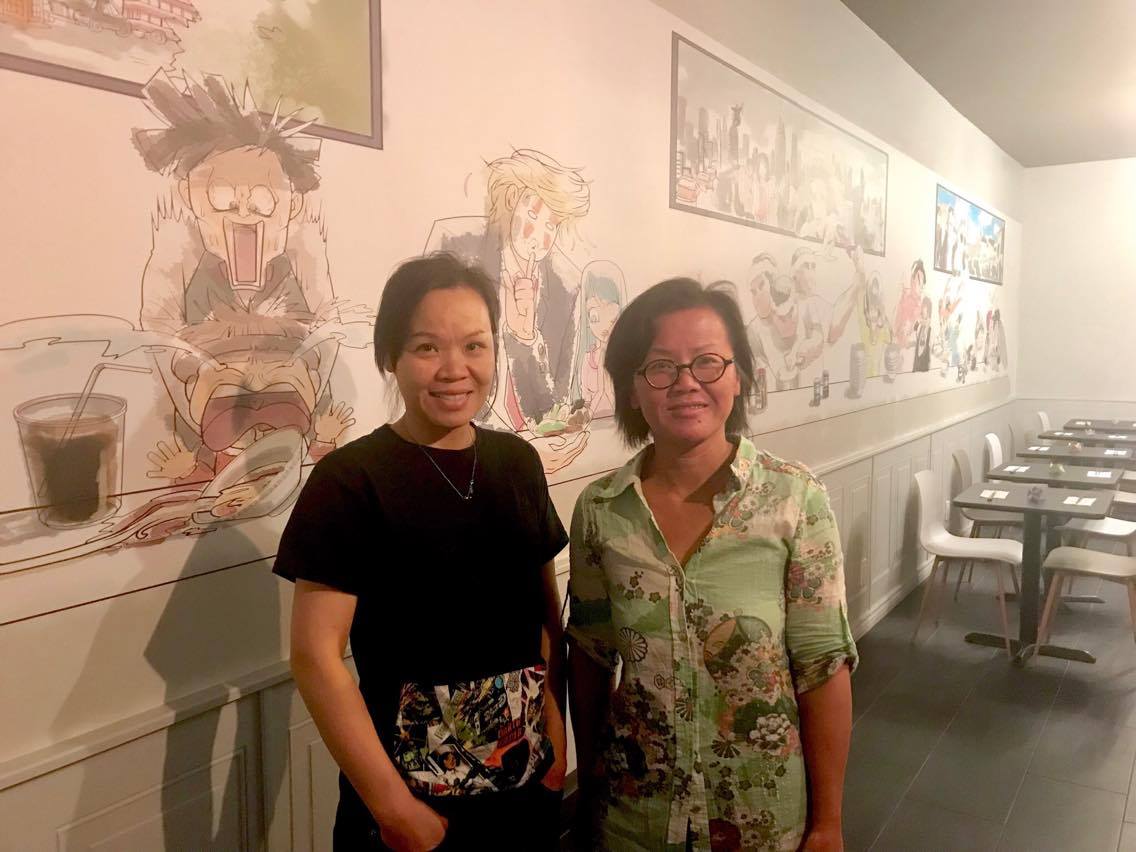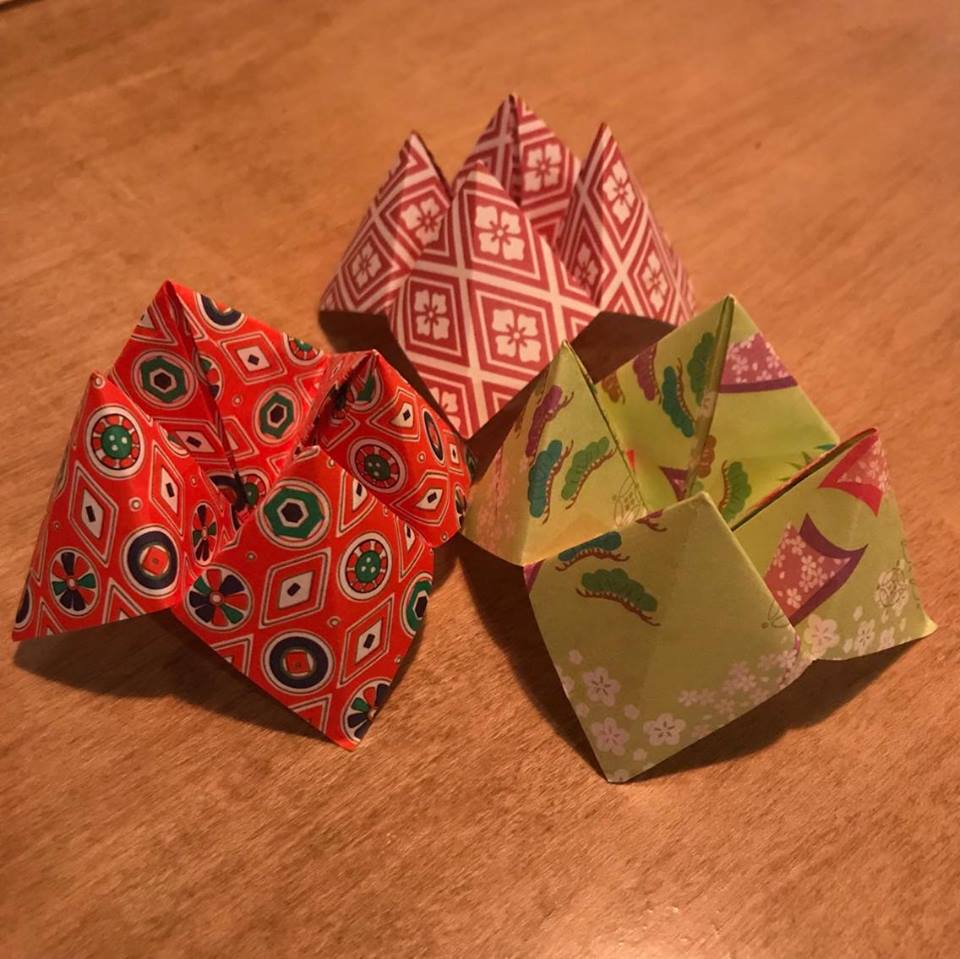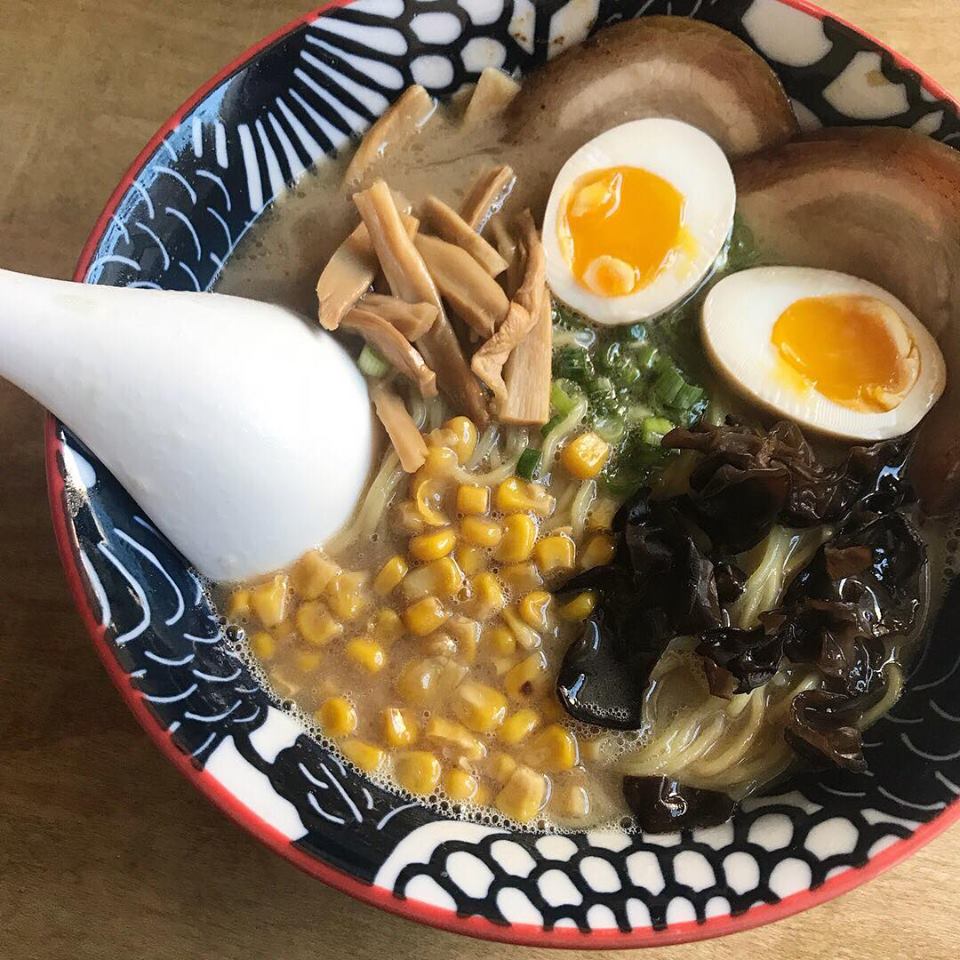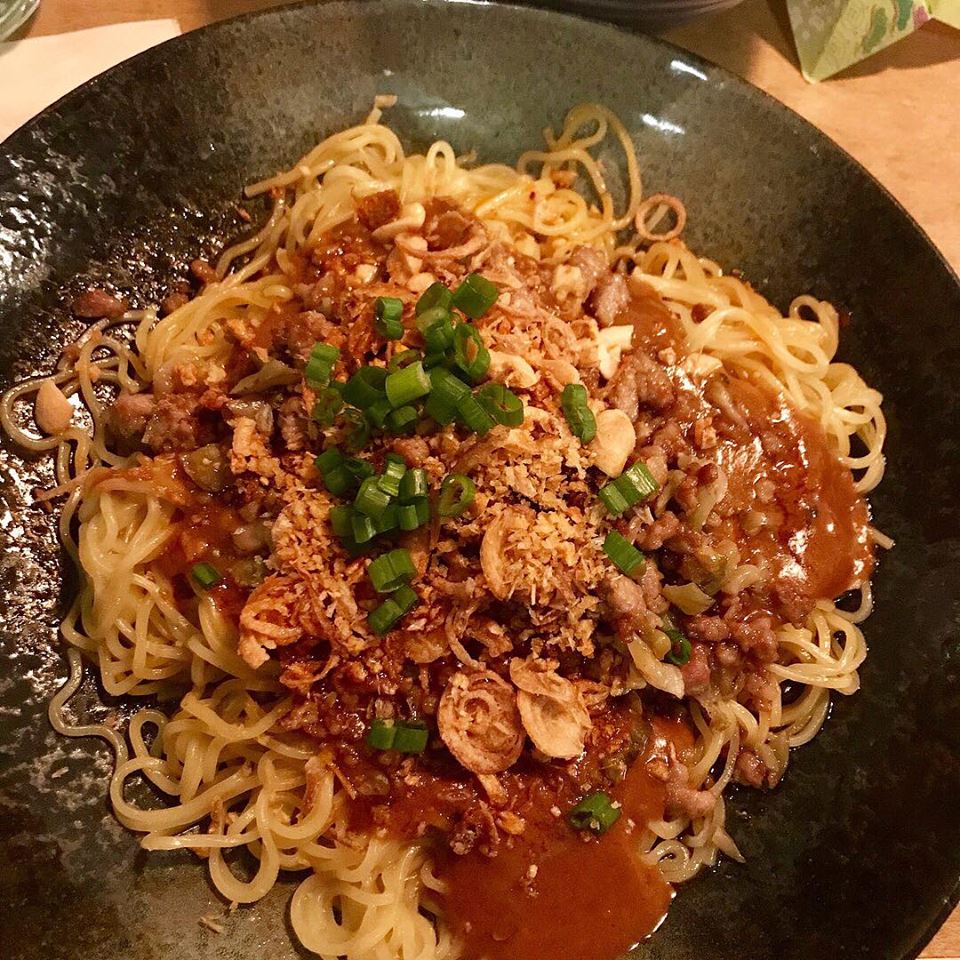Vanessa J Wu*
Paku Pakus is a new ramen restaurant on 2nd Avenue, between 72nd and 73rd Streets. It is right off the 72nd Street stop on the Q line and opened on Monday, October 23. The restaurant is the culmination of two sisters’ love of food and Japan, modified to fit the needs of those on the Upper East Side. They are enthusiastic about their housemade products, signature flavors, and quality you can taste. I spoke with both the owner, Chin Ip, and the chef, Sarah Ip.
NS: Would you say there’s a special meaning to the name Paku Pakus?
CI: Paku paku literally means open and close. So for dining, it means your mouth is opening and closing constantly. Eating nonstop and also in big mouthfuls. Paku paku is also this [picks up origami fortune teller]; it is part of our logo. This paper-folding is like fortune-telling, so it would be good to expect what is unexpected and let life tell you what is going on and the next step.
NS: What inspired you to open this restaurant?
CI: I spent quite some time in Japan–a lot of different kinds of places, a lot of different kinds of food. But ramen has really become my passion. I like trying different kinds of ramen from different regions. Different regions have different kinds of soup. Like kaito is more fattening, more rich. Soup noodle is one thing, but I found out I also like mazemen, which is with different kinds of sauce; it’s kind of spicy. In the Upper East Side, you don’t see a lot of ramen shops, unlike Lower Manhattan, so I saw this as a good opportunity to open one for myself. And I knew to find a good chef, so I hired Sarah and the team in the kitchen. I think, together, we can really make it work.
NS: Sarah, how did you start working with Chin and Paku Pakus?
SI: Actually, we’re sisters! So we’ve been working together for quite a long while. We’re always looking for good food, good restaurants. If we thought a restaurant was serving crappy food, we thought, “Oh, if we had a restaurant, we could do it better.”
NS: How long have you been cooking?
SI: I’ve been cooking since I was young! Actually, I was a pastry chef before. I love cooking and I went to Paris for cooking classes. Also, I spent time in Japan. We tried many different places for ramen, so we were like “Oh! Maybe this is something we can handle and try to make our own.”
NS: How long were the two of you in Japan?
CI: I have been on and off for 2-3 years; Sarah would travel to Japan and visit me. She also visited her friends there before. She and our cooking staff have been working on Japanese food for quite a while, so I thought this would be a good team to start with.
NS: What do you both think makes for good ramen?
CI: First of all, it should not be soggy. The noodles have to be chewy, but not undercooked. For soup noodles, the soup has to be steamingly hot, especially to fit the cold weather in New York. The meat–the chashu–has to be melty, not dry; it should still be moist, so we keep the fat to keep the moisture of the meat. Egg-wise, it should not be overcooked, it should be—
SI: Soft-boiled.
CI: Yes. That’s what I was thinking. How about you?
SI: No MSG! The soup that we cook, I cook over 8 hours. A lot of people just use from concentrate.
CI: We are trying to tell the story to the community about the birth of our most popular dish so far, the Rich and Creamy. So how we get it, we have a big pot and we load it with a lot of bones, full of gelatin, which is good for our cold weather.
SI: We use maybe 60-80 pounds of meat in order to reduce to only 20 quarts of soup. So in the summer, we will probably make it less concentrated, because it will likely be too rich for people in the summer. But in the cold, it is really good when it’s really thick. So if you put a spoon to your lips, it’s gonna’ stick.
CI: It’s one of our most popular ones so far. It’s really picking up in the cold weather.
SI: For the dumplings and everything, we grind the pork ourselves, do the dumplings ourselves, instead of just buying it from the store.
CI: The principle is that we are not making anything for our customers which we ourselves don’t eat. So for us, no MSG and the pork has to be hand-ground. That’s our principle; that’s our rule.
NS: What would you say is your favorite item, for each of you, on the menu?
CI: Tantan men! I always go for some strong flavor–black coffee, strong tea. So tantan is my favorite because it is spicy, nutty, sour. Everything seems to be going on in your mouth.
SI: The chicken lollipops. First, we got the Japanese wing sauce, and after that, we thought why don’t we put some strawberry puree and balsamic vinegar? We loved it. That’s still my favorite.
NS: What are your future plans for the restaurant?
CI: After we get more business, we will be thinking of spinning off to other areas in Manhattan or Queens. That will be some years down the road. We want to really stabilize our quality, make this one successful, and make a name for ourselves before we start expanding.
SI: After we make this successful, maybe we can have a central kitchen and make our own noodles. It is only one store right now and the space in the kitchen is not really big, so we cannot make our own noodles. But if we have a central kitchen, we could.
CI: Our next step is making our own noodles. That’s how you can maintain the quality and customize it, too.
SI: For example, some of our customers think the lunch portion noodles are too big. If we could make our own noodles, we could make it a smaller portion for lunch hours. For lunch, we have our lunch combo with the salad and appetizer; if they have the full portion of the ramen, it’s probably too much and they’ll fall asleep when they get back to the office.
CI: Also, we think the mazemen, those with sauce, should go with a thick noodle. It’s like pasta. To me, I’d like for it to be like linguine, but when we check with our supplier, the thickest they can offer us is not really to our standards.
NS: And are you planning on expanding the menu?
SI: We are minimizing at the beginning because we like to do everything step by step. We still have a lot of interesting dishes that we’re going to do.
CI: Some of the items printed on our flyer, we are taking out from our menu, because we talked to the staff and they said it’s better to minimize the number of dishes and make sure it’s good quality before we expand the menu. I think the next step is vegetarian stock. We are now offering fish stock and the pork stock that we are proud of. It used to be a Jewish area, so the pork stock is actually a minus here. As for the fish stock, some people are vegetarian, so they can’t even take the fish stock. So we really want to embrace our vegetarian community.
NS: Do you have any sneak previews of what you want to add to the menu once you start expanding, besides making your own noodles and veggie stock?
CI: The ones we planned before that we’ve taken out from the menu. Like the cheesy gyoza. We find it quite interesting. The first few days, we offered it and people loved it; it’s just a little labor-intensive.
SI: It has parmesan on the bottom, so it’s crispy.
CI: It takes a long time to prepare, so I said let’s sacrifice it for the time being and come back later. That is one thing. Another is the eggplant, which is on our flyer, but we took it out as well. That one is –
SI: Spicy miso and also lime miso. We use the Korean spicy sauce, mix it with the miso on the eggplant, and grill the top; you can eat it alone or with chips.
CI: The miso that we use is four types of miso; we blend it all together in different portions, so it is something that is really house-made for us. It’s not something you can get from the supermarket. We want to use this miso blend that we have, our signature one, and use it in more and more dishes.
NS: The area we’re in is more Eastern, traditional seating while the rest of the restaurant is more Western style seating. What made you choose this difference in layout?
CI: Tatami is very uniquely Japanese. I thought a tatami table would be good especially when it’s facing the street, kind of overlooking the street: being seen and also seeing people. The problem with the tatami is that a lot of Westerners, probably with long legs, would have a harder time, because with the real tatami, people sit on the floor with their legs folded at the back. That’s why we have the hole down there so people can stretch out their legs. We tried to make it Japanese, but we modified it in order to try to fit the Americans. We have the long table over there in the back as well. We thought of putting those low stools, which is very Asian, but we found out this area, the Upper East, has a lot of elderly people, so they may have problems with backless seating. So for the backless, we have it at the bar, but for in the dining hall, we have something with a back.
NS: There’s this eye-catching mural all along the wall when we walk in. Tell me about how that came to be.
CI: Noodle shops usually have a long noodle bar. This was our first thought of what to do with our décor. But the thing is our setup is a little difficult, so we changed our mind. When you think of a noodle bar, it’s a long table. And we wanted to have a lot of different, colorful characters. When you think of a long table, with a lot of characters, the first thing that comes to mind is Da Vinci’s “The Last Supper.” So when I talked to my manga artist in Tokyo, I gave them the idea of a long table with different characters that [mimicks] Da Vinci’s “Last Supper”. So some of the gestures, you can find in “The Last Supper” as well. The judge who is holding back those two guys behind him, you can also find in “The Last Supper,” but we kind of changed it a little bit. The theme is still there, but instead of Jesus saying someone betrayed him, we get the reactions of colorful figures and how they handle their different bowls of noodles. A little boy gets shocked by his dad and drops his bowl, so it flies off the table and we have a girl in school uniform flying off and catching a mouthful. And we have a guy nonstop paku paku, nonstop eating. We also have a ramen competition–three contenders trying to get in the competition: the winner and the other two, still trying to fight for it and stay in the game. We’re thinking of different ways people will handle their noodles, how people treasure it, and fight for what they want.
NS: You mentioned the ramen eating contest. Do you think you’ll have anything like that here?
CI: That would be a very good promotion for us, but we haven’t really thought that through yet.
NS: Is there anything either of you would like to add?
SI: I really want to take any comments where we can make improvements from it. At the beginning, I don’t mind. Tell me, instead of not coming back!
CI: Daily, we are fine-tuning our recipes from the comments we are getting from our customers. The serving team and the cooking team are working very closely. If anyone isn’t finding it good enough for any reason, we always tell the cooking team.
*This interview was conducted on November 4, 2017. Since then, Paku Pakus has made some of the changes mentioned in the interview, such as creating a vegetarian-friendly broth.





